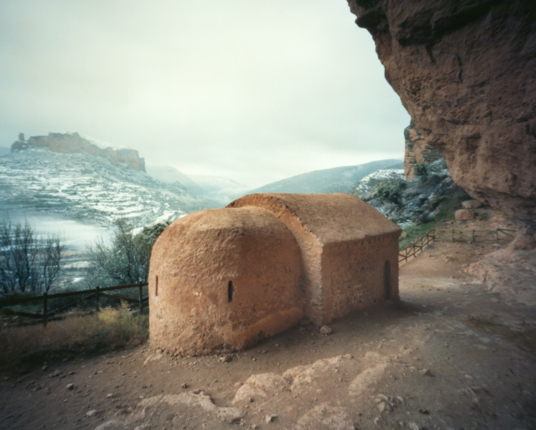
Photo: Sebastian Schutyser
The ermita of Viguera in La Rioja, Spain, captured here with a pin-hole camera by photographer Sebastian Schutyser, was constructed in the 13th century and contains important mural paintings within. An overhanging rock cliff protects the ancient adobe structure from the elements, which is only accessible by steep 15 minute climb from the nearest road. Schutyser writes of the ermita:
The Spanish word ermita [English: hermitage], has a similar structure and meaning in all languages derived from Latin. It always refers to an uninhabited or isolated place, a location for spiritual retreat. In Romance languages it comes from the Latin word eremus, tracing back to the Greek eremos, which means deserted. In Spain, their use has shifted throughout the centuries, but they have always been isolated sanctuaries or chapels. Hermits inhabited them in seclusion, or in other times, in small groups. Other hermitages were built by pilgrims, who tried to invoke divine protection on their journeys. Finally, some hermitages were erected for pastoral cults, or to house religious brotherhoods. At present many still have the cult of a saint celebrated in them once a year.
The photo is part of a larger photographic collection of ermitas by Schutyser, 575 Romanesque and Pre-Romanesque ermitas total, who is hoping to assemble a book from these photographs.
